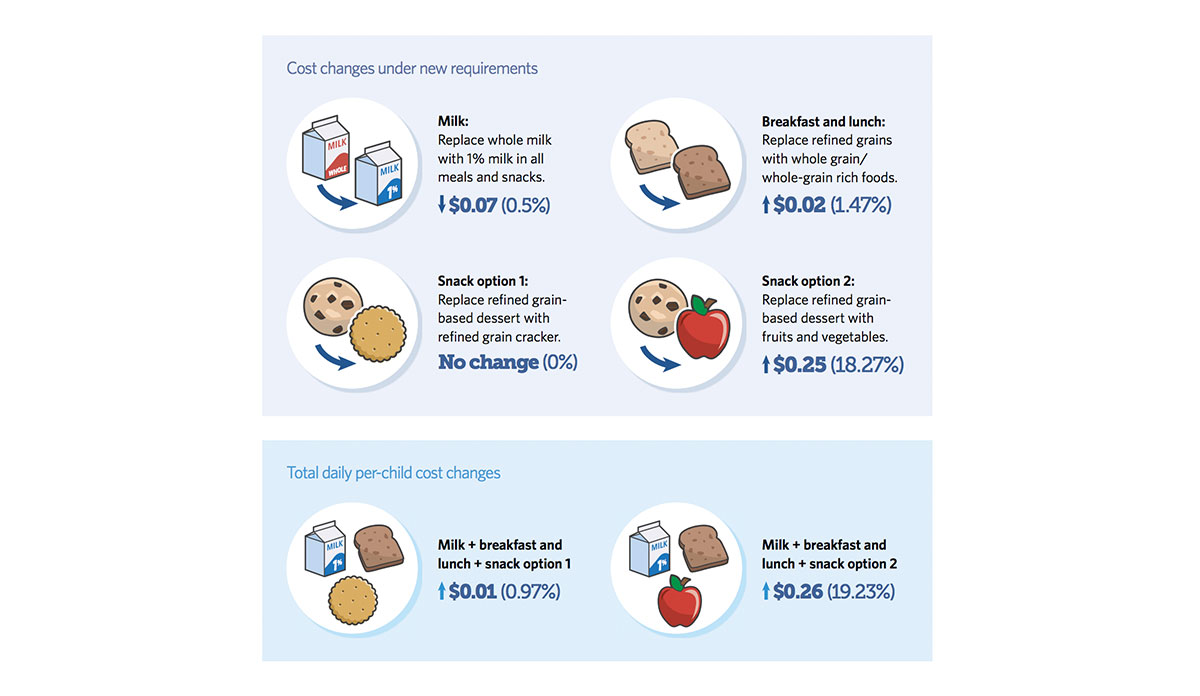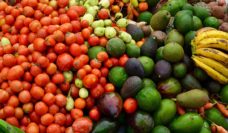A new USDA rule requires meal providers participating in the Child and Adult Care Food Program (CACFP) to serve more whole grains, fruits, and vegetables as snacks. These programs serve over 4 million children daily in the United States and include child-care centers, after-school programs, and adult day-care homes.
A September 2017 report by the Pew Charitable Trust found that improving food variety and quality comes at a cost beyond the reach of some meal providers. The figure above shows that incorporating more nutritious food can drive up daily per-child costs for providers by 26 cents. Snacks make up 36% of meals served by CACFP enrollees, and must incorporate at least two of the following: vegetables, fruits, grains, meat or meat alternatives, and fluid milk. Additionally, the new rule emphasizes serving low-fat milk and whole-grain foods, which can further increase cost.
Although CACFP reimburses participating meal providers, those in lower income settings may not have sufficient funds to purchase whole grain-rich and low-fat foods. One program serving about 200 children reported weekly costs rising by $200.
CACFP’s current reimbursement system limits compliance with the new USDA rule because some programs cannot afford to increase food spending. As a result, lower income providers may withdraw from the program, affecting the children they serve. Researchers recommend that state agencies and sponsors help providers implement the rule by offering training and resources to manage finances, especially when expenses continuously exceed revenue.
Databyte via Healthier Nutrition Standards Benefit Kids. Kids’ Safe and Healthful Food Project.













